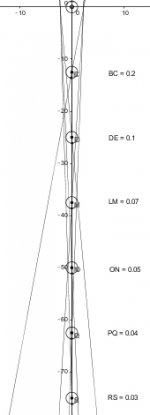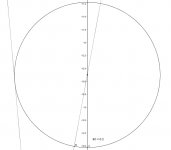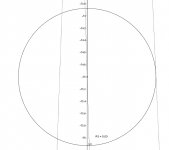I drew these up in Geogebra to show just how small the range for center cue ball is from straight shots to ultra thin shots from various distances between cue ball and object ball. We have to precisely place our cue tip within these ranges to find center cue ball for every shot from straight to ultra-thin. The closer the clue ball is to the object ball the larger the tip placement range.
The following are distances of 1 diamond to 6 diamonds away on a 9' table between cue ball and object ball and their tiny corresponding tip placement ranges for center cue ball to cover all shots:
12.5": 0.2"
25": 0.1"
37.5": 0.07"
50": 0.05"
62.75: 0.04"
75": 0.03"

1 Diamond Away:

6 Diamonds Away:

The following are distances of 1 diamond to 6 diamonds away on a 9' table between cue ball and object ball and their tiny corresponding tip placement ranges for center cue ball to cover all shots:
12.5": 0.2"
25": 0.1"
37.5": 0.07"
50": 0.05"
62.75: 0.04"
75": 0.03"

1 Diamond Away:

6 Diamonds Away:
